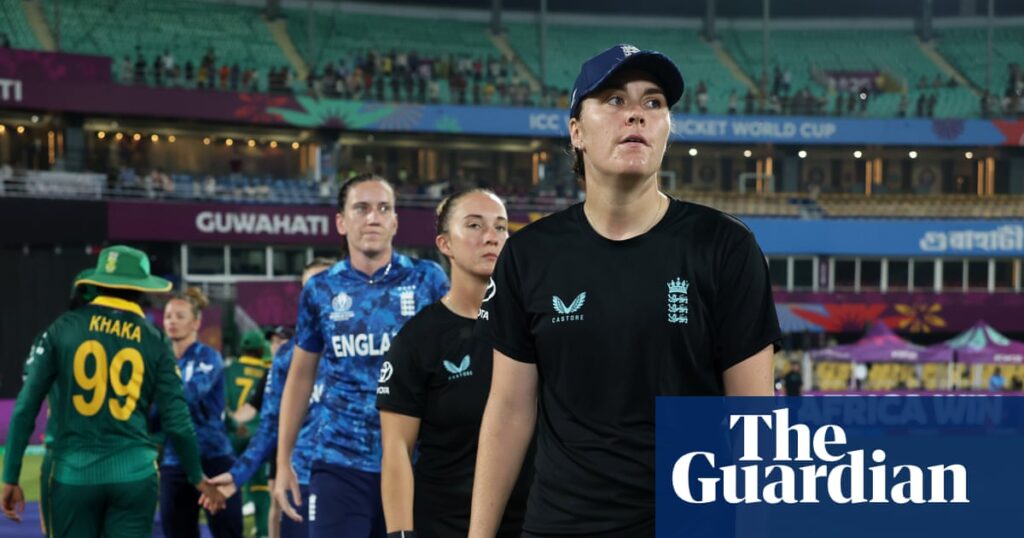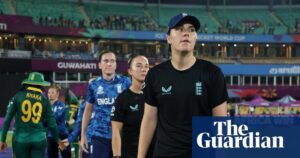
England’s women’s cricket team has once again faced an unexpected exit from a World Cup, losing a match they were widely expected to win. This time, it was the semi-final of the 50-over World Cup against South Africa, a game that echoed their exit from the 20-over World Cup a year earlier against the West Indies. Both matches saw England falter under pressure, raising questions about the effectiveness of changes promised after last year’s Ashes debacle.
The recent defeat at the hands of South Africa was marked by a stunning innings from the South African captain, Laura Wolvaardt, who scored 169 runs. Despite England’s improved fielding performance, holding on to more catches than any other team in the tournament, they were unable to chase down a daunting total of over 300 runs.
Post-Ashes Review: Promises and Realities
Following the 16-0 Ashes whitewash, a comprehensive review was conducted with the intent to overhaul the team’s approach. The appointment of Charlotte Edwards as head coach was seen as a pivotal step towards rejuvenating the squad. However, the outcome of the World Cup suggests that the changes have not yet translated into consistent success.
Edwards, known for her results-driven coaching style, has made some progress. Under her guidance, England’s fielding has significantly improved, as evidenced by their performance in the World Cup. Yet, the team’s batting remains inconsistent, a point Edwards herself acknowledged after the semi-final loss.
“We do need to improve our batting – I don’t think it’s been consistent enough at times,” Edwards stated post-match.
The Batting Conundrum
The semi-final highlighted England’s batting woes, as they collapsed to 0 for 2 and 1 for 3 early in their innings. The lack of depth in their batting lineup was starkly contrasted by South Africa’s ability to score 117 runs in the last 10 overs, thanks to the confidence and freedom Wolvaardt had in her fellow batters.
England’s reliance on Nat Sciver-Brunt and Heather Knight for meaningful runs is a concern. The team needs a lineup capable of consistently exceeding the 300-run mark to compete with the world’s best. While Alice Capsey’s partnership with Sciver-Brunt showed promise, it was insufficient to secure victory.
Future Prospects and Challenges
Edwards faces the challenge of rebuilding the team as several key players approach the twilight of their careers. With five of their top six unlikely to feature in another 50-over World Cup, the need for a fresh approach is urgent.
Edwards has signaled a shift in focus towards younger talents like Grace Scrivens, Seren Smale, and Tilly Corteen-Coleman. However, the recent central contracts, largely benefiting the current squad, pose a potential hurdle to this transition.
“This is the end of an ODI cycle. We’ve got to look at the future now,” Edwards remarked, hinting at impending changes.
Looking Ahead: The Path to Rejuvenation
The England and Wales Cricket Board’s commitment to the current squad through rolling contracts could hinder the integration of new talent. The specter of stagnation and complacency looms large, reminiscent of the factors that contributed to the Ashes whitewash.
For Edwards, the task is clear: to prevent a return to past failures and to signal her seriousness about fostering a competitive and dynamic team. The road ahead is challenging, but with strategic planning and a focus on nurturing emerging players, England can aspire to reclaim their status as a formidable force in women’s cricket.
The next steps for England involve not only addressing immediate performance issues but also laying the groundwork for long-term success. As the team reflects on their World Cup journey, the lessons learned will be crucial in shaping their future strategies and ambitions.






